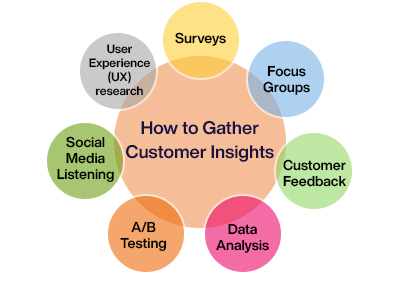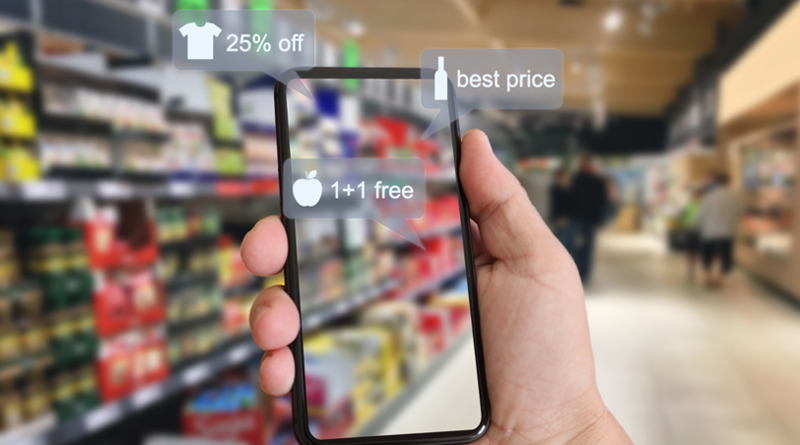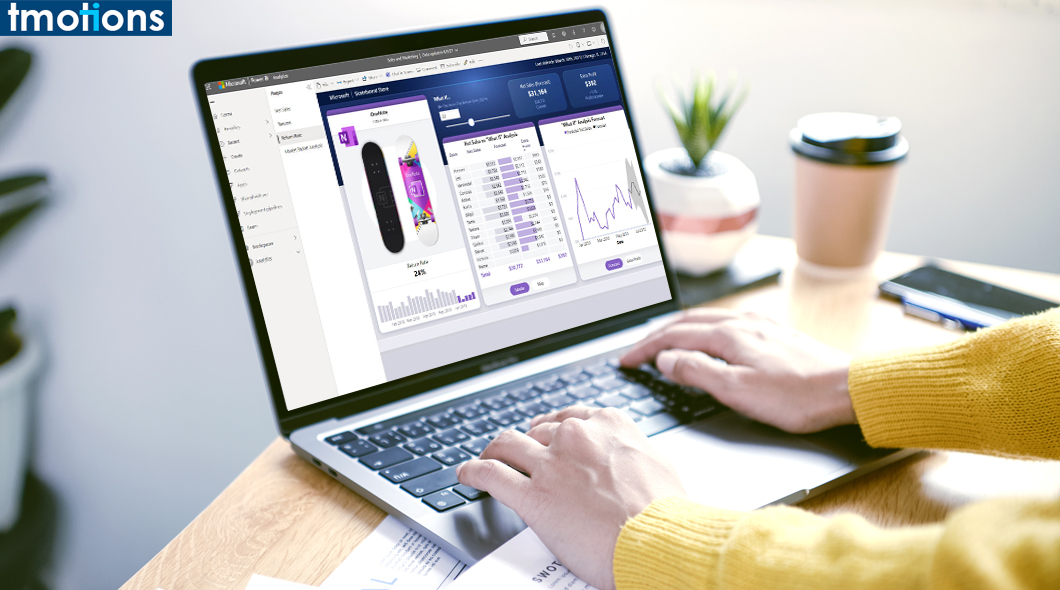What is Big Data Ecommerce?
Big data ecommerce refers to the use of large, complex sets of data in the ecommerce industry. This data can be used to improve various aspects of an ecommerce business, such as personalizing the shopping experience for customers, identifying trends and patterns in customer behavior, and optimizing pricing and inventory management. Big data technologies, such as Hadoop and Spark, are often used to process and analyze this data.

Read More: How Food Went High Tech | Five Trends Shaping Grocery Retail | Enhance Your eCommerce Store
How to Use Big Data for Ecommerce Business Success
There are several ways that ecommerce businesses can use big data to drive success:
-
Personalization:
By analyzing customer data, businesses can tailor the shopping experience to each individual customer, making recommendations and displaying products that are more likely to be of interest to them.
-
Inventory Management:
By analyzing sales data, businesses can optimize their inventory levels to reduce waste and ensure that popular products are always in stock.
-
Pricing Optimization:
By analyzing competitor data and customer behavior, businesses can set prices that maximize profits while remaining competitive.
-
Marketing:
By analyzing customer data, businesses can identify target market segments and develop effective marketing strategies to reach them.
-
Fraud Detection:
By analyzing transaction data, businesses can identify and prevent fraudulent activity.
-
Customer Service:
By analyzing customer data, businesses can identify potential issues and proactively address them to improve customer satisfaction.
In order to use big data effectively, ecommerce businesses should invest in robust data infrastructure and analytics tools, as well as building a team of data scientists and analysts.
Read More: ChatGPT Guide | 5 Things You Need To Succeed as a Grocer | Power Up your B2B eCommerce with Search
Potential Benefits of Leveraging Big Data in eCommerce
There are several potential benefits of leveraging big data in ecommerce, including:
-
Improved Customer Experience
By analyzing customer data, businesses can personalize the shopping experience and provide more relevant product recommendations, leading to higher customer satisfaction and loyalty.
-
Increased Efficiency
Big data resources have the potential to increase efficiency. Analyzing the data on inventory levels, sales, and customer behavior, businesses can optimize their operations and improve efficiency.
-
Increased Revenue
Using data to optimize pricing, inventory management, and marketing strategies, businesses can increase sales and revenue.
-
Cost Savings
It improves operations and reduces waste, businesses can save money on unnecessary expenses.
-
Competitive Advantage
Better understanding of customer behavior and market trends, businesses can stay ahead of the competition.
-
Better Decision Making
The utilization of big data analytics enables businesses to gain valuable insights into customer behavior, allowing them to tailor their interactions and improve the overall customer experience. By leveraging the vast amount of information available through big data, companies can make more informed decisions and create a more personalized experience for their clients.
Overcoming the Limitations of Big Data Analysis (e.g. Bias, Incomplete Information)
There are several steps that businesses can take to overcome the limitations of big data analysis, such as bias and incomplete information:
-
Data Quality:
By ensuring that the data used for analysis is accurate and complete, businesses can reduce the chances of drawing inaccurate conclusions.
-
Data Validation:
By validating the data used for analysis, businesses can ensure that it is relevant and reliable.
-
Data Cleaning:
By cleaning the data and removing any irrelevant or duplicate information, businesses can reduce noise and improve the quality of the data.
-
Data Governance:
By establishing a framework for data governance, businesses can ensure that data is used ethically and responsibly.
-
Data Sampling:
By taking a sample of data and testing it to ensure that it is representative of the population, businesses can reduce the chances of sampling bias.
-
Data Diversity:
By using multiple data sources and diverse data types, businesses can reduce the chances of bias in the data.
-
Algorithmic Transparency:
By being transparent about the algorithms used for analysis, businesses can ensure that their results are fair and unbiased.
-
Human Oversight:
By having humans review the results of big data analysis, businesses can catch any errors or biases that may have been introduced by the algorithms.
-
Explainability:
By using interpretable machine learning models, businesses can understand the reason behind the predictions made by the models and detect any biases.
-
Continual Monitoring:
By monitoring the data and results continuously, businesses can detect and correct any errors or biases as they occur.
Importance of Consumer Insights in eCommerce
Consumer insights are important in eCommerce because they provide valuable information about customers’ needs, preferences, and behaviors. This information can be used to improve the overall customer experience, increase sales and customer loyalty, and inform marketing and product development strategies. Consumer insights can be gathered through various methods such as surveys, focus groups, customer feedback, and data analysis.
By understanding the needs and preferences of customers, eCommerce companies can create personalized and relevant shopping experiences, which can lead to increased customer satisfaction and retention.
Read More: Microsoft Dynamics 365 For Sales | Digital Transformation | NopCommerce vs Magento
How to Gather Customer Insights
There are several ways to gather customer insights, including:

-
Surveys
Surveys are a great way to gather customer insights. They can be conducted online, by phone, or in person and can be used to gather information about customer preferences, satisfaction levels, and demographics.
-
Focus Groups
Focus groups are a qualitative research method in which a small group of customers is brought together to discuss a specific topic or product. This can provide valuable insights into customer perceptions, attitudes, and behaviors.
-
Customer Feedback
Gathering customer feedback can provide valuable insights into customer experiences and perceptions. This can be done through various channels such as social media, email, and customer service interactions.
-
Data Analysis
Analyzing customer data can provide valuable insights into customer behavior, preferences, and demographics. This can be done by analyzing website traffic, purchase history, and customer demographics.
-
A/B Testing
A/B testing is a method of comparing two versions of a product or website to see which one performs better. This can be used to gather insights on customer preferences and behavior.
-
Social Media Listening
Social media listening is the process of monitoring and analyzing social media conversations to understand customer sentiment and preferences.
-
User Experience (UX) research
This is a method that helps to understand how users interact with a product, service, or website. And, this can be done through various methods such as interviews, usability testing, and surveys.
It is important to gather customer insights from various sources and to regularly update the insights to reflect the changes in consumer behavior, preferences, and demographics.
Read More: All You Need To Know About NopCommerce | Microsoft Dynamics 365 & NopCommerce
The Future of Big Data in Retail Market Analytics
The future of big data in retail market analytics looks promising as it will continue to play a vital role in shaping the industry. Some of the key areas where big data is expected to have a significant impact in the future of retail market analytics include:
-
Predictive Analytics
Big data will enable retailers to use predictive analytics to forecast demand, optimize pricing, and improve inventory management.
-
Real-time Analytics
Retailers will be able to use real-time analytics to gain insights into customer behavior and make instant decisions based on the data.
-
Augmented Reality (AR) and Virtual Reality (VR)
Big data will be used to create more immersive and personalized shopping experiences using AR and VR technology.
-
Machine Learning
Machine learning will be used to analyze big data and make predictions about customer behavior and preferences.
-
Internet of Things (IoT)
IoT devices will generate vast amounts of data that can be used to improve the customer experience and optimize operations.
-
Customer Segmentation
Big data will allow retailers to create highly detailed customer segments, which will enable them to create more effective marketing campaigns and product offerings.
-
Interoperability
Big data platforms will become more interoperable, enabling retailers to share and analyze data across different systems and platforms.
-
Robotics and Automation
Robotics and automation will be used to automate data collection and analysis, which will speed up the process and improve accuracy.
As big data technologies continue to evolve, retailers will be able to gain a more detailed understanding of their customers and the market, which will help them make better decisions and improve their competitiveness.
Conclusion
In conclusion, leveraging big data in ecommerce can provide valuable insights into consumer behavior and preferences. By gathering and analyzing data from various sources such as website analytics, social media, and customer feedback, businesses can gain a better understanding of their target audience and tailor their strategies accordingly.
Get in touch with us today to learn more about how we can help you leverage big data for your ecommerce business and gather valuable consumer insights.













